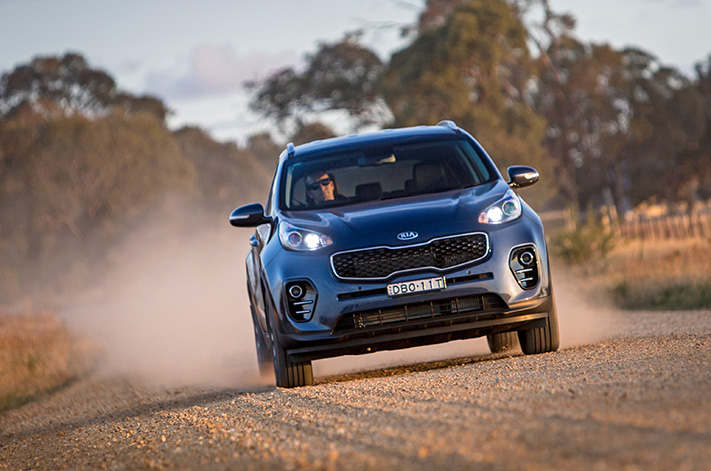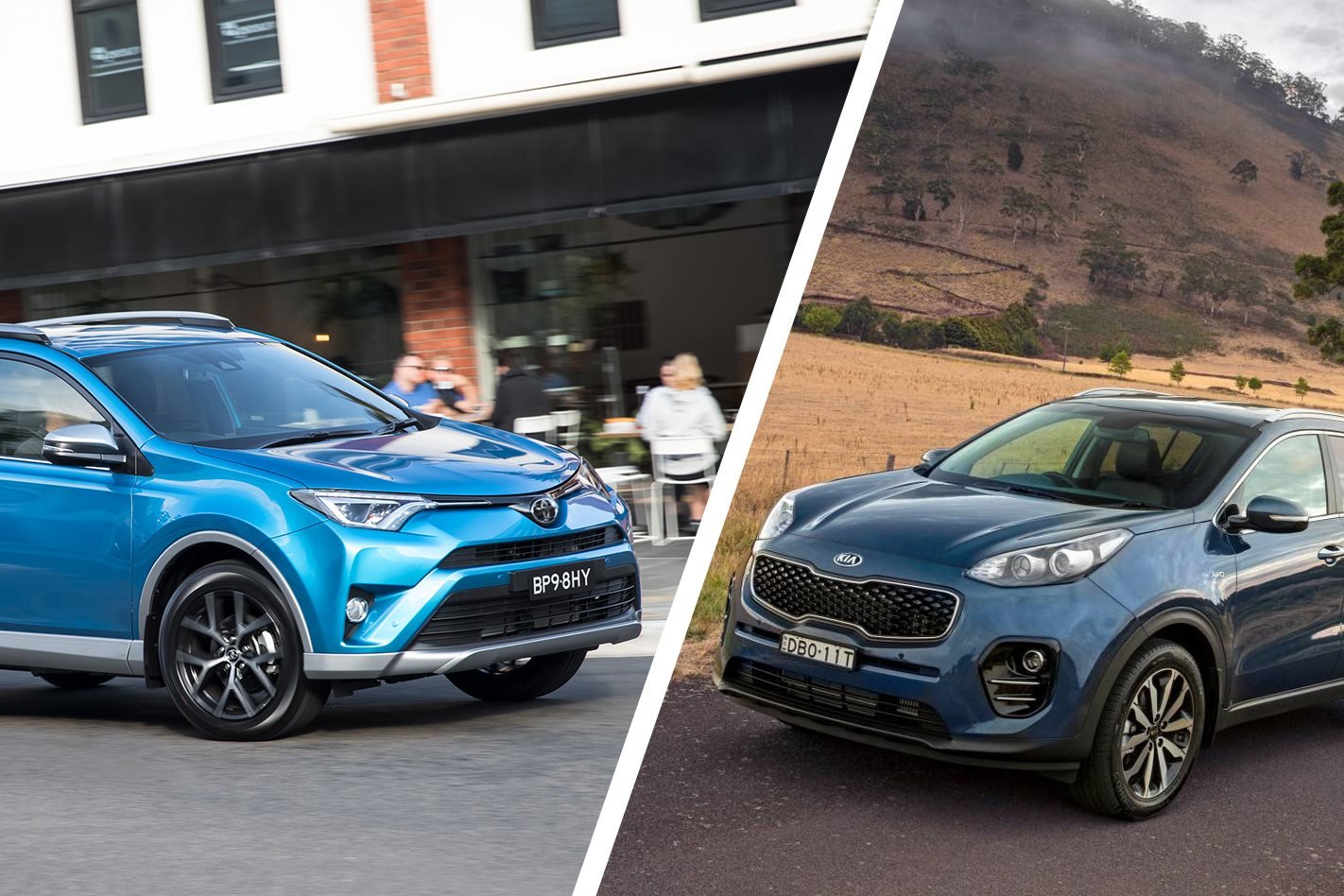
TOYOTA has been Australia’s best-selling car brand for the last 14 years, leaving once-dominant local brands including Ford and Holden in its wake. It now accounts for one in every five new cars sold here, including its strong-selling Toyota RAV4 mid-size SUV.
It even started building cars here in the 1960s. Before making the decision several years ago to quit Australian manufacturing, Toyota had even planned to build what was likely to be the next RAV4 here.

Kia, in contrast, is a relative newcomer with humble Aussie origins dating back to the 1980s as a cheap alternative to established brands. It’s since shaken that image by making a more premium push – although it hasn’t completely forgotten about how to compete on value. It has a mid-size SUV that competes directly with the RAV4 called the Kia Sportage.
Both play in one of the most popular, and hotly contested, segments of the Australian new-car market. The RAV4 is currently outsold by both the Mazda CX-5 and the Nissan X-Trail, but finishes regularly in the monthly lists of the nation’s top 20 best-selling passenger cars.
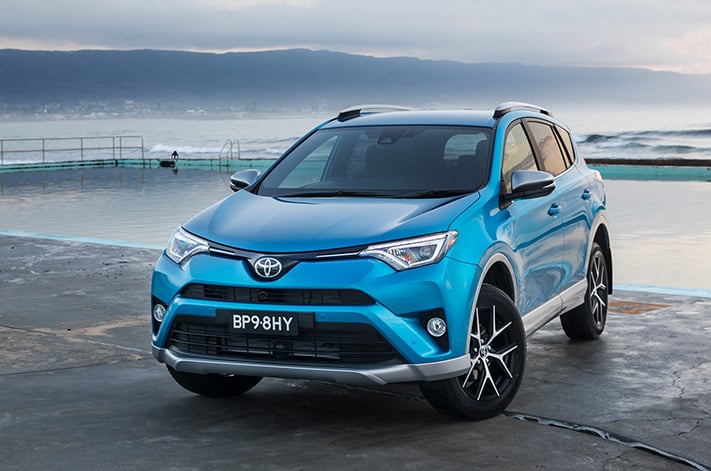
In contrast, the Kia Sportage is a mid-field player, selling in similar volumes to the Subaru Forester and the Mitsubishi Outlander. It made the shortlist for the 2017 Wheels Car of the Year award that was eventually given to the Mazda CX-9, only the second SUV ever behind the Ford Territory to snare the most coveted motoring award in Australia.
Here, we look at better-equipped, mid-range front-wheel-drive versions of both cars priced around $35,000.
PRICE AND EQUIPMENT – Winner: Kia Sportage SLi
The fourth-generation Kia Sportage SLi, introduced to Australia early last year, is priced from $34,690 before on-road costs. In contrast, the fourth-generation Toyota RAV4 GXL, introduced here in 2013 but now including a raft of safety updates rolled out in September last year, sells from $35,390.
They come pretty well equipped for the money, showing competition between the brands is intense. Standard equipment highlights for both cars runs to dual-zone climate control air-conditioning, keyless entry and start, a six-speaker multimedia system that includes a reversing camera, rear parking sensors, a selectable driving mode that flicks between economy and performance tunes, a hill-hold function that stops the car rolling back on inclines, and tinted windows which cut out glare in the back seats.
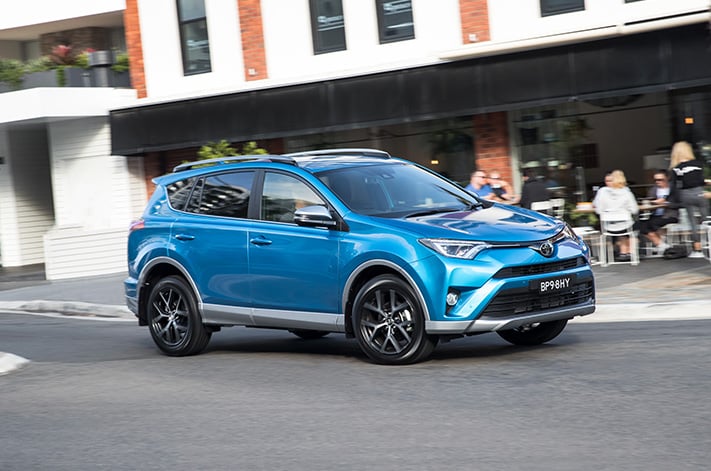
Both cars sit on 18-inch alloy wheels, and feature LED daylight running lamps and tail-lights.
There are differences, though. With the Kia, you can open the boot via the key fob, there are front parking sensors, and leather-look plastic adorns the steering wheel and gearshift selector.
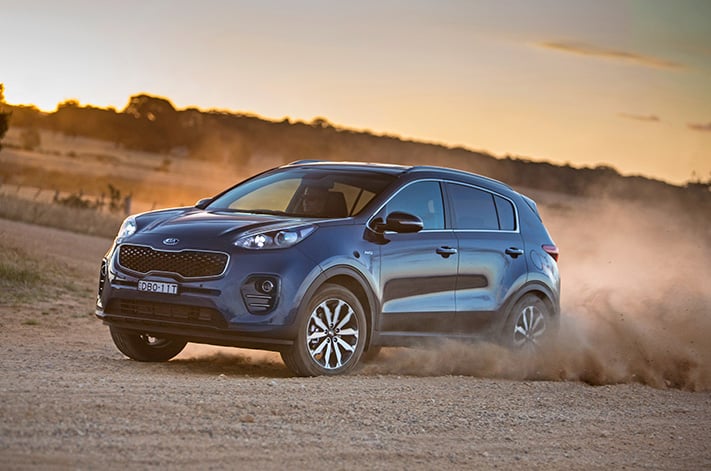
In contrast, the Toyota includes an extra driver’s knee airbag, the headlights are much fancier and brighter LEDs, it gains satellite navigation (but only because it does not have Android Auto/Apple CarPlay smartphone integration, and instead you use a Toyota app) and crisper-quality digital radio, and it uses real leather for the steering wheel.
Things, then, lean slightly towards the cheaper Kia Sportage in terms of family-friendly functionality for slightly less money. But the clincher here is the warranty; Kia offers seven years with unlimited kilometres and a year of roadside assistance, while Toyota makes do with only three years and 100,000 kilometres. That’s likely to be a winner with buyers.
INTERIOR AND VERSATILITY – Winner: Kia Sportage SLi
Okay, we’ve already covered off that in the Kia your hands feel leather-look plastic, while in the Toyota it’s the real deal.
But that’s really the only flaw in the Sportage’s otherwise well-presented and laid-out interior. Crack open the driver’s door and you’re presented with a friendly and inviting cabin with plenty of space, even in the rear seats (accessed via rear doors that are much better shaped than the RAV4’s).
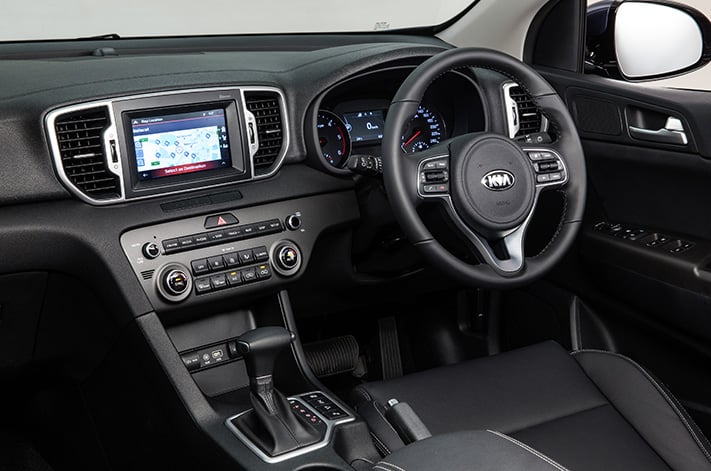
Instrumentation is slick and classy-looking, and there’s even a USB port built into the back of the centre armrest – vital for keeping moody teens in tune with their personal collection of favourite tunes. There’s also that remote boot release button on the key fob that helps with arms-full deposits into the space.
The Toyota RAV4 is also well presented, but not as well laid out. It is also roomy and comfortable, apart from an unwelcome dash insert that protrudes into the front passenger’s knee space. The multimedia unit doesn’t look anywhere near as classy as the Kia’s.
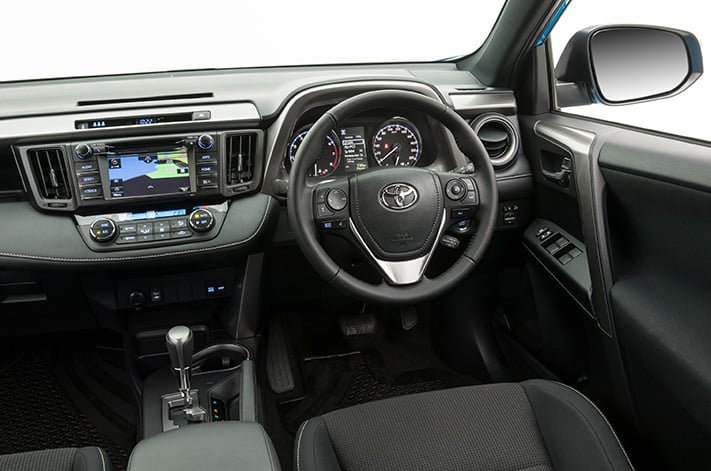
It’s more plasticky, too, in that more surfaces are covered in hard-wearing surfaces that don’t have a classy look or feel to them, making the interior look a little cheap.
Neither of these cars get rear-seat air vents, which some competitors including the Ford Kuga, Honda CR-V and Volkswagen Tiguan have. The RAV4, though, includes a recessed, dash-mounted grille that is meant to direct air into the rear seats; it works, but it’s no replacement for rear vents.
ON THE ROAD – Winner: Toyota RAV4 GXL
Yep, the Toyota RAV4 is the winner here. Toyota is generally known for its lack of feel behind the wheel, but this is one instance where a sweeping generalisation is wrong.
It has good steering feel, which is important for anyone who likes driving. When it comes to cornering, it’s not the sharpest SUV on the road, though, and sharp bumps transfer into the cabin.
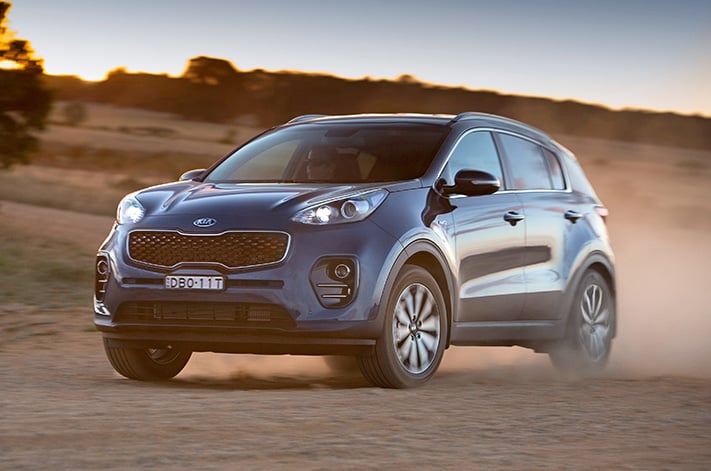
But the RAV4’s 2.0-litre petrol engine and its continually variable transmission do well to shift the mid-size SUV along. The engine revs willingly, and the CVT – one of the better ones on the market – milks more than adequate performance out of it.
In contrast, the Kia Sportage’s 2.0-litre petrol engine is from Hyundai/Kia’s old line-up (Hyundai bailed Kia out of bankruptcy more than two decades ago, and the pair now share drivetrains and engineering resources). It’s a lacklustre performer, lacking some of the top-end sparkle and fuel efficiency of the new-gen “GDI” engine fitted to the Sportage’s more expensive, Hyundai-badged sibling, the Tucson. The more traditional six-speed automatic that sends drive to the front wheels goes a long way to smooth off the engine’s rough edges.
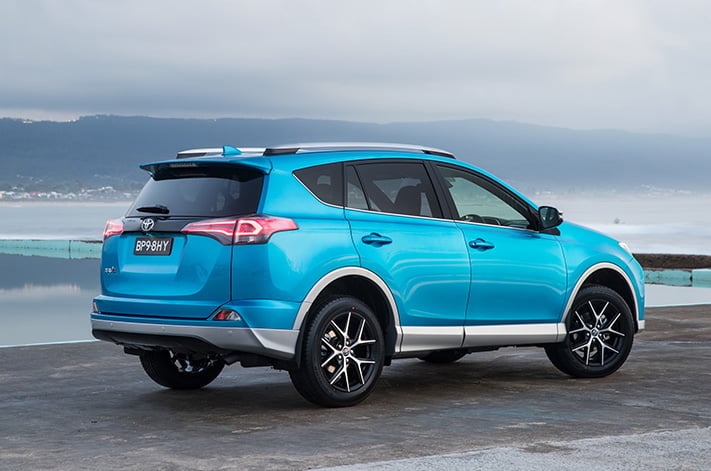
The Sportage drives well enough, absorbing the road surface’s lumps and bumps much better than the RAV4’s suspension system. But it doesn’t steer anywhere near as good as the RAV4.
VERDICT – Winner: Kia Sportage SLi
Kia’s mid-size SUV is more family-friendly than the RAV4, rides better and has a much better interior than its Toyota rival. It’s therefore a much more rounded package that really deserves to sell a bit better than it does.
